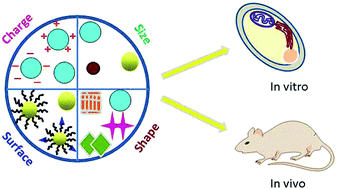Biophysical, biopharmaceutical and toxicological significance of biomedical nanoparticles
Abstract
Nanotechnology has undoubtedly brought innovation to the biomedical field, which is apparent from the advances including those in drug delivery, treatment of pathologies, imaging of disease sites, etc. The rationale behind the use of nanoparticle-based products for biomedical applications is to benefit from their unique physicochemical characteristics, mainly, size, surface area and surface functionality, to address these particles and the encapsulated payload, if any, to the desired sites in the biological system. To design appropriate nanoparticle products for biomedical applications aimed for human and/or animal use, understanding of the interplay between the physicochemistry of nanoparticles and the biophysical properties is crucial because it is the interaction of the nanoparticles at the biological interface which regulates the nanoparticles pharmacokinetics, biodistribution and safety. Also, the assessment of the potential of nanoparticles to induce undesired effects at the systemic level, organ level, cellular and sub-cellular levels is crucial for anticipating the potential risks associated with the use of nanoparticles from a safety standpoint. This review is aimed at summarizing the nanoparticle candidates for biomedical applications, and reviewing, based on the relevant literature data, the inter-relationship between nanoparticles' physicochemistry and biophysical properties in conditioning the nano–bio interactions and inturn regulating the nanoparticles pharmacokinetics, biodistribution and toxicological properties. Besides, the importance of designing relevant physiologically-based modeling approaches for the simulation and prediction of the performance and safety of new nanomaterials based on their properties has been also discussed. An important portion of the review focusses also on the description of the methodologies for a detailed assessment of the toxicological properties of the nanoparticles.


 Please wait while we load your content...
Please wait while we load your content...